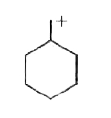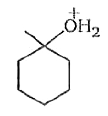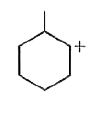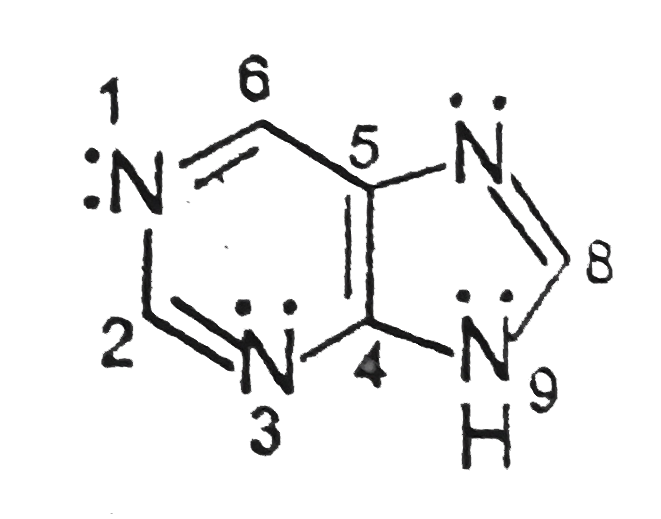Which of the following are expected to be covalent?
BeCl2
SnCl4
CuS
CaCl2
The correct Answer is:A, B
To determine which compounds are expected to be covalent, we will analyze the nature of the bonds in the given compounds based on the principles of ionic and covalent bonding.
Step 1: Understand the Characteristics of Ionic and Covalent Bonds
- Ionic bonds typically form between metals and nonmetals, where there is a transfer of electrons from the metal to the nonmetal, resulting in the formation of cations and anions.
- Covalent bonds form between nonmetals, where electrons are shared between atoms.
Step 2: Apply Fajans' Rules
Fajans' rules help predict whether a bond will be ionic or covalent based on the size and charge of the ions involved:
- A small cation with a high positive charge is more likely to polarize the electron cloud of a nearby anion, leading to covalent character.
- A large cation and a small anion typically lead to ionic character.
Step 3: Analyze Each Compound
1. NaCl (Sodium Chloride):
- Na⁺ is a larger ion with a low charge (+1), and Cl⁻ is a smaller ion. This combination suggests an ionic bond.
2. BeCl₂ (Beryllium Chloride):
- Be²⁺ has a higher charge (+2) and is relatively small, while Cl⁻ is larger. This suggests that BeCl₂ has covalent character due to the high charge density of Be²⁺.
3. SnCl₄ (Tin(IV) Chloride):
- Sn⁴⁺ has a high charge (+4) and is small compared to Cl⁻. This indicates that SnCl₄ is also likely to be covalent.
4. CuS (Copper(II) Sulfide):
- Cu²⁺ has a relatively high charge and can exhibit covalent character, but the presence of S (which can also form ionic bonds) makes this compound less likely to be purely covalent.
5. CaCl₂ (Calcium Chloride):
- Ca²⁺ is a larger ion with a high charge (+2) and Cl⁻ is smaller. This suggests that CaCl₂ is ionic.
Step 4: Conclusion
Based on the analysis:
- Covalent Compounds: BeCl₂ and SnCl₄.
- Ionic Compounds: NaCl, CaCl₂, and possibly CuS.
Thus, the expected covalent compounds from the list are BeCl₂ and SnCl₄.
Summary of Steps:
1. Understand the characteristics of ionic and covalent bonds.
2. Apply Fajans' rules to determine bond nature.
3. Analyze each compound based on ion size and charge.
4. Conclude which compounds are covalent.
- Ionic bonds typically form between metals and nonmetals, where there is a transfer of electrons from the metal to the nonmetal, resulting in the formation of cations and anions.
- Covalent bonds form between nonmetals, where electrons are shared between atoms.
Fajans' rules help predict whether a bond will be ionic or covalent based on the size and charge of the ions involved:
- A small cation with a high positive charge is more likely to polarize the electron cloud of a nearby anion, leading to covalent character.
- A large cation and a small anion typically lead to ionic character.
1. NaCl (Sodium Chloride):
- Na⁺ is a larger ion with a low charge (+1), and Cl⁻ is a smaller ion. This combination suggests an ionic bond.
2. BeCl₂ (Beryllium Chloride):
- Be²⁺ has a higher charge (+2) and is relatively small, while Cl⁻ is larger. This suggests that BeCl₂ has covalent character due to the high charge density of Be²⁺.
- Sn⁴⁺ has a high charge (+4) and is small compared to Cl⁻. This indicates that SnCl₄ is also likely to be covalent.
- Cu²⁺ has a relatively high charge and can exhibit covalent character, but the presence of S (which can also form ionic bonds) makes this compound less likely to be purely covalent.
- Ca²⁺ is a larger ion with a high charge (+2) and Cl⁻ is smaller. This suggests that CaCl₂ is ionic.
Based on the analysis:
- Covalent Compounds: BeCl₂ and SnCl₄.
- Ionic Compounds: NaCl, CaCl₂, and possibly CuS.
1. Understand the characteristics of ionic and covalent bonds.
2. Apply Fajans' rules to determine bond nature.
3. Analyze each compound based on ion size and charge.
4. Conclude which compounds are covalent.
Topper's Solved these Questions
- PERIODIC CLASSIFICATION OF ELEMENTS AND GENERAL INORGANIC CHEMISTRYBOOK - CENGAGE CHEMISTRY ENGLISHCHAPTER - PERIODIC CLASSIFICATION OF ELEMENTS AND GENERAL INORGANIC CHEMISTRYEXERCISE - Ex 1.29 (Integer)
3 Videos
- PERIODIC CLASSIFICATION OF ELEMENTS AND GENERAL INORGANIC CHEMISTRYBOOK - CENGAGE CHEMISTRY ENGLISHCHAPTER - PERIODIC CLASSIFICATION OF ELEMENTS AND GENERAL INORGANIC CHEMISTRYEXERCISE - Ex 1.32 (Assertion-Reasoning)
2 Videos
- PERIODIC CLASSIFICATION OF ELEMENTS AND GENERAL INORGANIC CHEMISTRYBOOK - CENGAGE CHEMISTRY ENGLISHCHAPTER - PERIODIC CLASSIFICATION OF ELEMENTS AND GENERAL INORGANIC CHEMISTRYEXERCISE - Ex 1.3 (Objective)
8 Videos
- P-BLOCK GROUP 14 - CARBON FAMILYBOOK - CENGAGE CHEMISTRY ENGLISHCHAPTER - P-BLOCK GROUP 14 - CARBON FAMILYEXERCISE - Exercises Archives (Subjective)
9 Videos
- PURIFICATION OF ORGANIC COMPOUNDS AND QUALITATIVE AND QUANTITATIVE ANALYSISBOOK - CENGAGE CHEMISTRY ENGLISHCHAPTER - PURIFICATION OF ORGANIC COMPOUNDS AND QUALITATIVE AND QUANTITATIVE ANALYSISEXERCISE - Assertion Reasoning Type
5 Videos
Similar Questions
Knowledge Check
Which of the following carbanion expected to be most stable?
Ap−NO2C^H4−CH2Bo−NO2C6H4−CH2Co−CHOC6H4CH2Dp−CHOC6H4CH2Which of the following is not expected to be intermediate of the following reaction ?
 A
A B
B C
C D
D
Which of the following is expected to be coloured in solutions
View SolutionWhich of the following order is expected to be correct ?
View SolutionWhich of the following would be expected to contain the most peroxisomes ?
View SolutionPurine has four nitrogen's , which of the following are you expect to be basic ?

View SolutionWhich of the following ligands is expected to bidentates?
View SolutionWhich among the following is not expected to be an aromatic species?
View Solution
